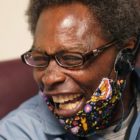
New bill seeks to remove Tennessee judge who illegally jailed children
|
Since 2000, Judge Donna Scott Davenport has overseen the juvenile justice system in Rutherford County, where the county jailed kids in 48% of the cases referred to juvenile court — compared with the statewide average of 5%. Now, state Sen. Heidi Campbell and state Rep. Gloria Johnson have said they are proposing legislation that could result in Davenport’s ouster. A bill starting the process was filed in the state Senate Friday.








